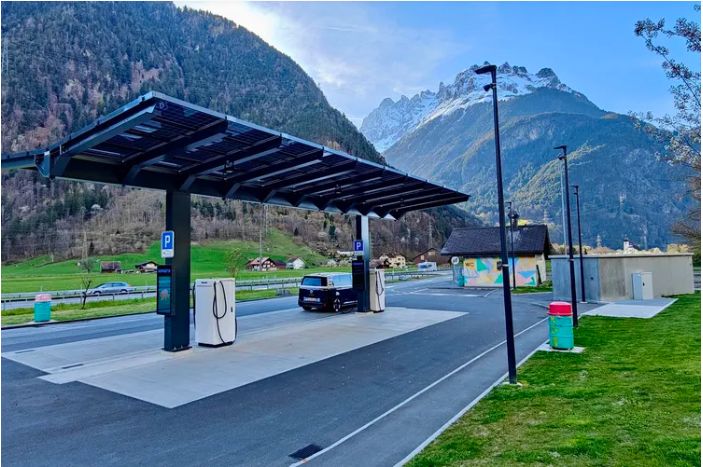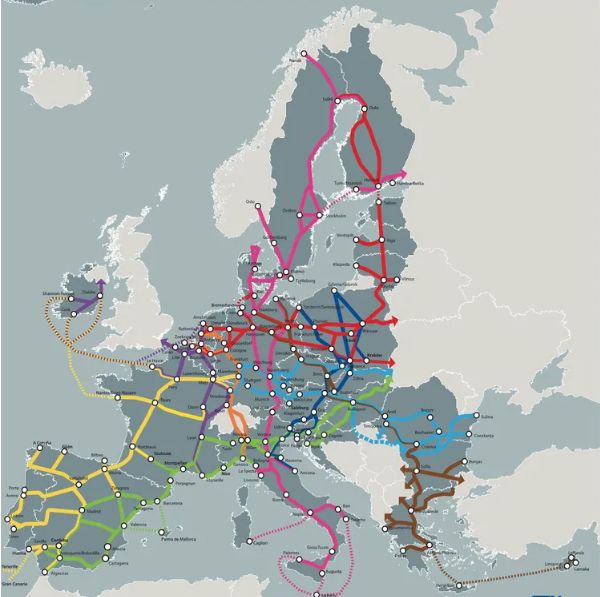The EU has approved legislation mandating the installation of fast EV chargers along highways at regular intervals, approximately every 60 kilometers (37 miles) by the end of 2025 / These charging stations must offer the convenience of ad-hoc payment options, allowing users to pay with credit cards or contactless devices without requiring subscriptions.
———————————————
By Helen, GreenScience - an ev charger manufacturer, which is in the industry for many years.
Jul 31, 2023, 9:20 GMT +8
The Council of the EU has approved fresh guidelines with the dual objective of facilitating seamless cross-continental travel for electric vehicle (EV) owners and curbing the emission of harmful greenhouse gases.
The updated regulation offers three major benefits to electric car and van owners. Firstly, it alleviates range anxiety by expanding the network of EV charging infrastructure along Europe’s primary highways. Secondly, it simplifies payment procedures at charging stations, eliminating the need for apps or subscriptions. Lastly, it ensures transparent communication of pricing and availability to avoid any unexpected surprises.
Starting in 2025, the new regulation mandates the installation of fast charging stations, providing a minimum of 150kW power, at intervals of approximately 60km (37mi) along the European Union’s Trans-European Transport Network (TEN-T) highways, which constitute the bloc’s primary transportation corridor. During a recent 3,000km (2,000 mile) road trip using a VW ID Buzz, I discovered that the current fast charging network along European highways is already quite comprehensive. With the implementation of this new law, range anxiety could be virtually eradicated for EV drivers who stick to TEN-T routes.
TRANS-EUROPEAN TRANSPORT NETWORK
TEN-T CORE NETWORK CORRIDORS
The recently approved measure forms part of the “Fit for 55″ package, a series of initiatives designed to aid the EU in achieving its objective of reducing greenhouse emissions by 55 percent by 2030 (compared to 1990 levels) and attaining climate neutrality by 2050. Approximately 25 percent of the EU’s greenhouse gas emissions are attributed to transportation, with road usage accounting for 71 percent of that total.
Following its formal acceptance by the Council, the regulation must undergo several procedural steps before becoming enforceable legislation throughout the EU.
“The new legislation represents a significant milestone in our ‘Fit for 55′ policy, which seeks to increase the availability of public charging infrastructure in cities and along motorways across Europe,” remarked Raquel Sánchez Jiménez, the Spanish Minister of Transport, Mobility, and Urban Agenda, in an official press statement. “We are optimistic that in the near future, citizens will be able to charge their electric vehicles with the same ease as refueling at conventional petrol stations today.”
The regulation mandates that ad-hoc charging payments must be accommodated through card or contactless devices, eliminating the need for subscriptions. This will enable drivers to charge their EVs at any station regardless of the network, without the hassle of searching for the right app or subscribing beforehand. Charging operators are obliged to display pricing information, wait times, and availability at their charging points using electronic means.
Furthermore, the regulation encompasses not only electric car and van owners but also sets targets for deploying charging infrastructure for heavy-duty electric vehicles. It also addresses the charging needs of maritime ports and airports, along with hydrogen refueling stations catering to both cars and trucks.
Post time: Aug-03-2023






